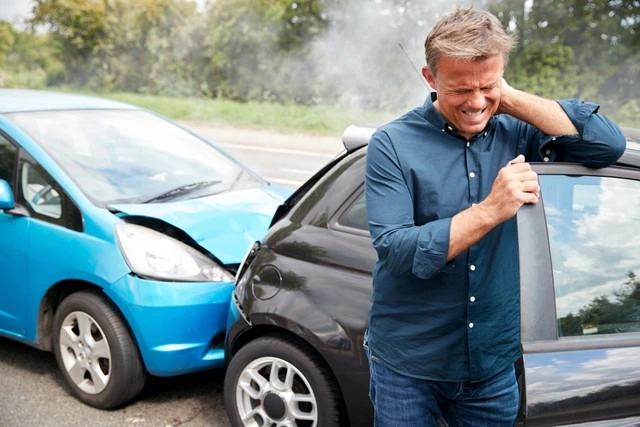In the disquieting aftermath of a collision where someone is injured, the impact extends far beyond the visible wreckage.
The sudden convergence of metal and flesh transforms a routine drive into a scene of urgency and concern.
In the exploration that follows, we navigate the multifaceted terrain of a collision involving injuries, from the initial shock and immediate response to the subsequent phases of medical assistance, legal considerations, and the emotional aftermath that lingers in the air.
The Immediate Shock following a collision: A Moment Frozen in Time
The first seconds following a collision with injuries are characterized by a profound sense of shock. The abrupt halt of motion, the muffled echoes of impact, and the realization that harm has befallen someone create a suspended moment in time. The atmosphere is charged with a palpable tension as occupants grapple with the reality of the situation. In these initial moments, the priority is to secure the safety of everyone involved, seeking refuge from potential hazards and assessing the well-being of the injured parties.
Summoning Assistance: The Urgent Call for Help
The gravity of a collision with injuries demands immediate action, and summoning emergency assistance becomes the topmost priority. Dialing emergency services, such as 911 in many regions, initiates a coordinated response that involves paramedics, police, and, if necessary, firefighters. Clear communication about the location, the nature of injuries, and the number of individuals involved is crucial, laying the foundation for a swift and targeted response.
Providing Initial Aid: A Balance of Urgency and Caution
While waiting for emergency responders to arrive, those at the scene may find themselves compelled to provide initial aid to the injured. Basic first aid skills, such as applying pressure to control bleeding or stabilizing the neck and head in case of a potential spinal injury, can make a crucial difference. However, it is essential to exercise caution and avoid actions beyond one’s level of training to prevent unintentional harm. The focus should be on preserving life and preventing further injuries until professional help arrives.
Coordinating with Emergency Responders: The Triaged Effort
As emergency responders arrive at the scene, the coordination of efforts intensifies. The injured are triaged based on the severity of their conditions, with those requiring immediate attention prioritized. Emergency medical personnel assess vital signs, administer life-saving interventions, and prepare for the swift transport of the injured to medical facilities. The collaboration between bystanders, if they have medical training, and professional responders creates a dynamic and synchronized effort aimed at minimizing harm and providing timely care.

The Role of Law Enforcement: Documenting and Investigating
Simultaneously, law enforcement personnel play a critical role in documenting the scene and conducting investigations. The gathering of evidence, statements from witnesses, and the creation of an official report contribute to understanding the circumstances of the collision. This information is not only valuable for legal proceedings but also aids in assessing the causes of the incident and implementing preventive measures to enhance road safety.
Medical Care Beyond the Scene: Hospitalization and Treatment
For those injured in the collision, the journey extends beyond the scene to the confines of medical facilities. Hospitalization, diagnostic procedures, and medical treatment become the next phases in the recovery process. The injured individuals may face surgeries, rehabilitation, and a spectrum of medical interventions aimed at restoring health and functionality. The extent of the injuries determines the duration and intensity of medical care required, shaping the path toward recovery.
Navigating Legal Implications: Liability and Insurance Considerations
In the wake of a collision with injuries, legal considerations come to the forefront. Determining liability is a complex process that involves a meticulous review of the circumstances leading to the incident. Insurance companies become pivotal players, assessing claims, conducting investigations, and negotiating settlements. Legal professionals may be engaged to advocate on behalf of those involved, ensuring fair compensation for medical expenses, property damage, and other losses incurred as a result of the collision.
Criminal Charges and Legal Accountability: A Consequence of Negligence
In cases where negligence or misconduct is a factor, criminal charges may be pursued. The legal system seeks to establish accountability for actions that lead to injuries in a collision. Drivers who violate traffic laws, operate a vehicle under the influence, or engage in reckless behavior may face criminal charges. The intersection of civil and criminal legal proceedings adds another layer of complexity to the aftermath of a collision with injuries, as the legal system strives to mete out justice.
Emotional Fallout: Coping with Trauma
Beyond the physical and legal dimensions, a collision with injuries leaves an indelible emotional imprint. Trauma, shock, and grief permeate the lives of those directly affected, as well as the broader community. Coping with the aftermath involves not only the injured individuals but also their families, friends, and witnesses who may have witnessed the traumatic event. Emotional support, counseling, and resources for trauma recovery become essential components in navigating the long-term impact of the collision.
Community Response: A Shared Sense of Responsibility
The repercussions of a collision with injuries extend beyond the immediate parties involved, resonating within the community at large. Local authorities, advocacy groups, and community organizations often mobilize to address road safety concerns, promote awareness, and implement preventive measures. T
Preventive Measures: The Imperative of Road Safety
In the aftermath of a collision with injuries, a resounding call for preventive measures echoes through the narrative. Road safety initiatives, public awareness campaigns, and educational programs gain prominence as communities grapple with the impact of such incidents. The imperative to enhance driver education, enforce traffic regulations, and invest in infrastructure improvements becomes a focal point in mitigating the risks associated with collisions.
Conclusion: Navigating the Complex Terrain of Consequences
In the wake of a collision where someone is injured, the journey unfolds along a complex terrain of physical, legal, and emotional consequences. From the immediate shock and urgency of summoning assistance to the ongoing medical care, legal considerations, and community response, each phase demands a measured and informed response.
